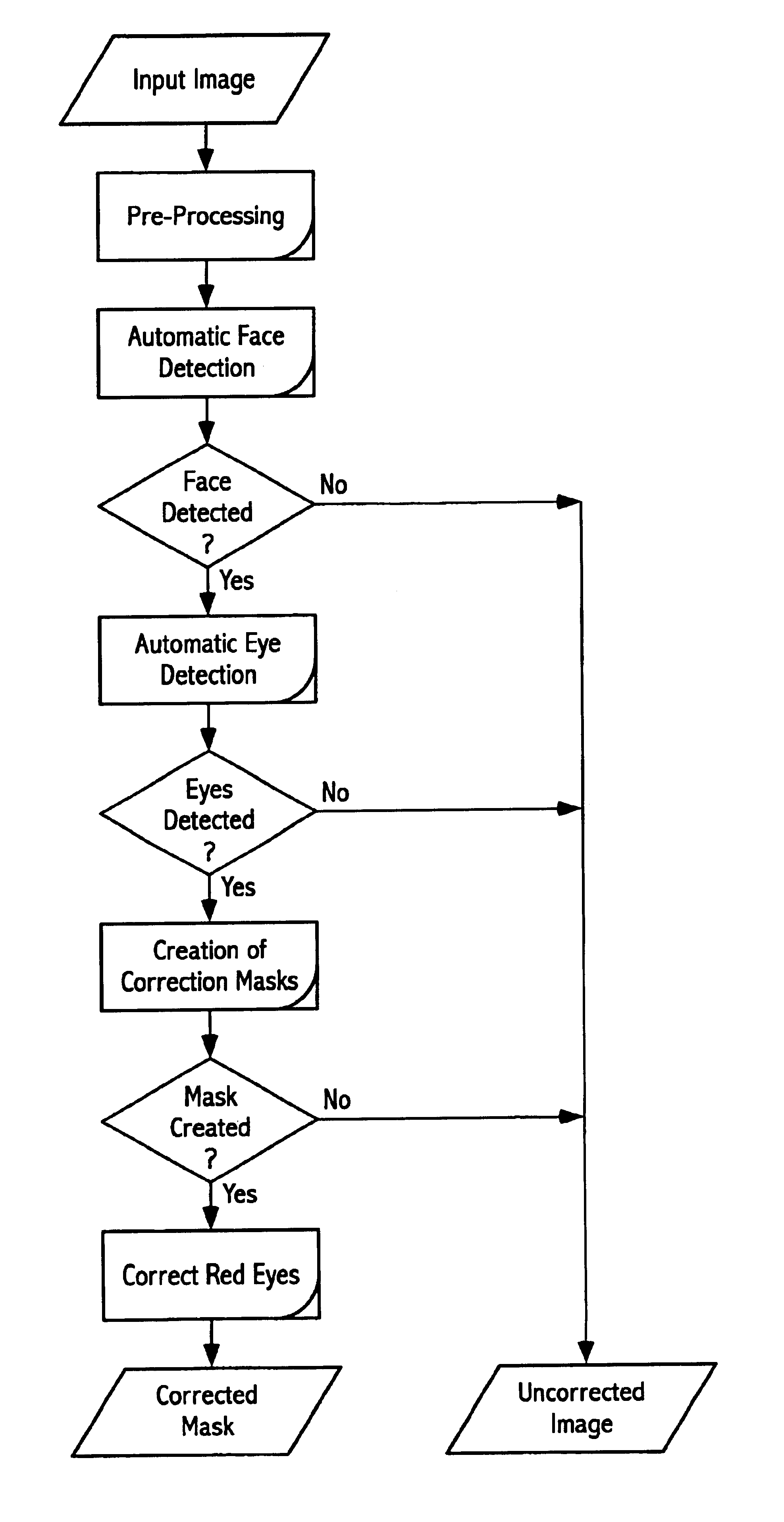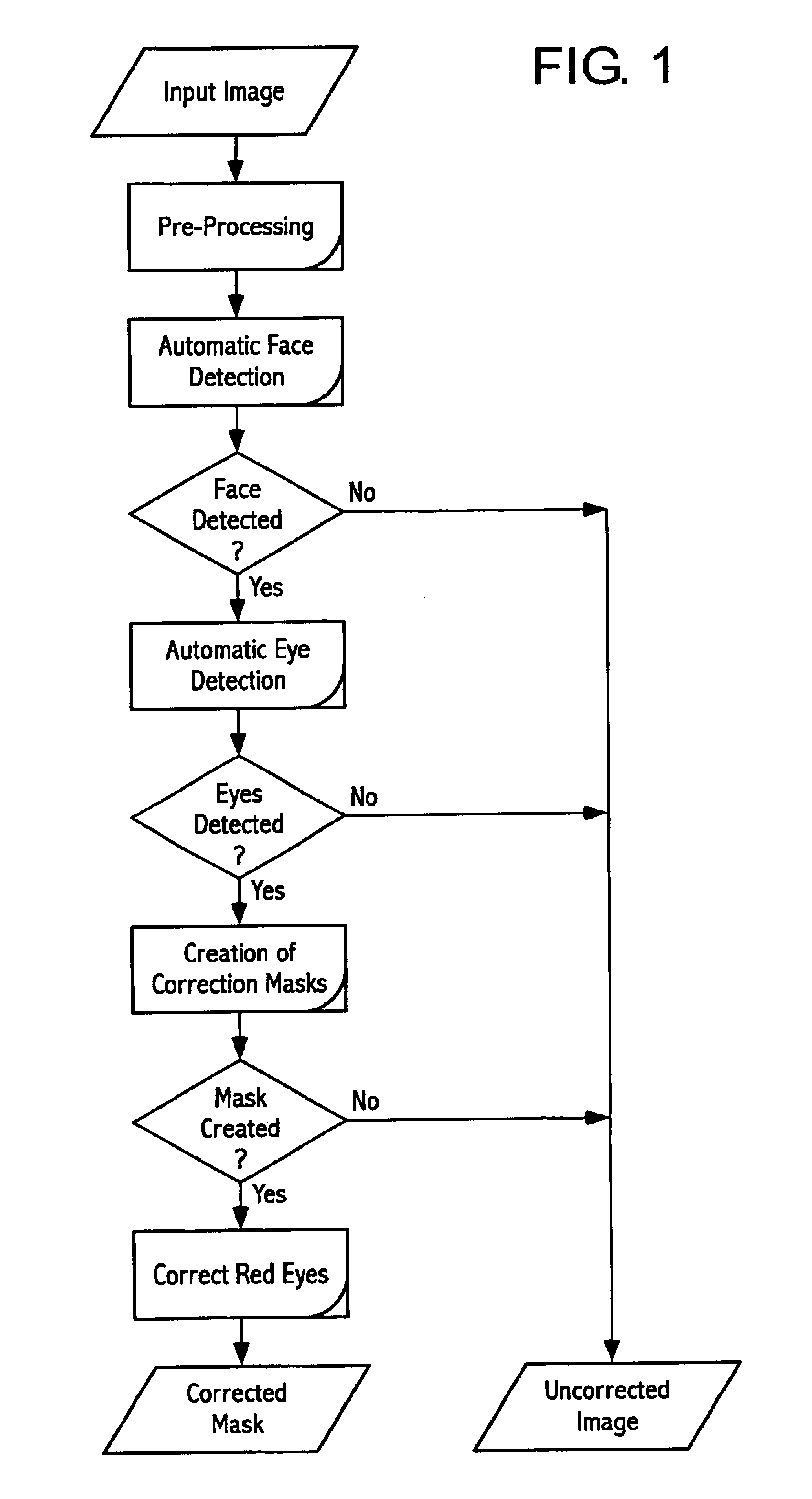Automatic color defect correction
a color defect and automatic technology, applied in the field of automatic red eye correction, can solve the problems of red eyes or at least reddish pupils, unacceptable high-speed workflow interaction of operators, etc., and achieve the effect of reducing the need for memory space and processing speed of a processing system and correcting the visual appearance of images
- Summary
- Abstract
- Description
- Claims
- Application Information
AI Technical Summary
Benefits of technology
Problems solved by technology
Method used
Image
Examples
Embodiment Construction
[0050]While the method according to the invention can also be used to correct colour defects of many other kinds, it will be discussed here with reference to the automatic detection and correction of red eye defects in the field of photo finishing. A red-eye defect occurs if a very strong light, e.g. a flash light is reflected from the retina, i.e. the back of the eye. The red colour is indicative for the blood vessels in the retina. In terms of colorimetry, red-eye defects are not defined properly and there is a very thin borderline between defective and not defective eyes. In general, in red-defective eyes, however, the values for the red colour channel will be considerably higher than the values for the two other colour channels (green, blue).
[0051]As shown in FIG. 1, there are several modules that, in turn, reduce a domain to be searched for. The domain to be searched, for instance, is a basic area in an uncorrected image, in which there is an increased likelihood of finding a p...
PUM
 Login to View More
Login to View More Abstract
Description
Claims
Application Information
 Login to View More
Login to View More - R&D
- Intellectual Property
- Life Sciences
- Materials
- Tech Scout
- Unparalleled Data Quality
- Higher Quality Content
- 60% Fewer Hallucinations
Browse by: Latest US Patents, China's latest patents, Technical Efficacy Thesaurus, Application Domain, Technology Topic, Popular Technical Reports.
© 2025 PatSnap. All rights reserved.Legal|Privacy policy|Modern Slavery Act Transparency Statement|Sitemap|About US| Contact US: help@patsnap.com



